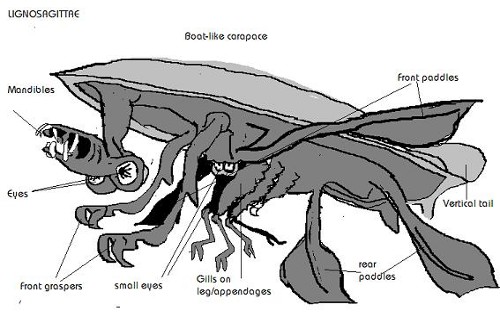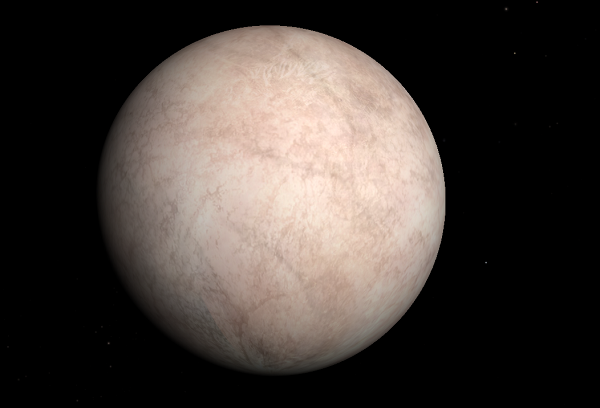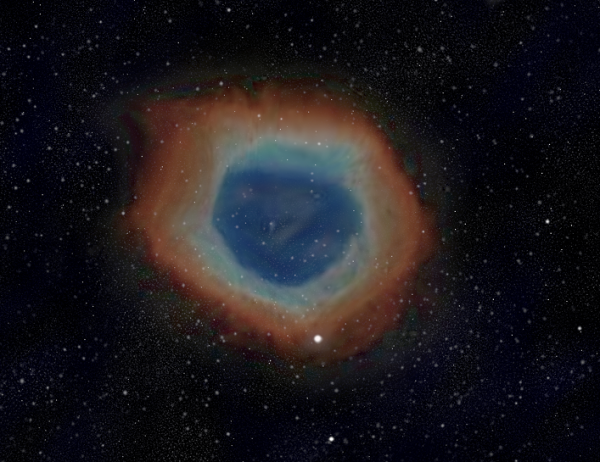BY LETTER
Lignosagittae
 Image from Steve Bowers |
Discovered in 3097 AT by the Ice-adapted Genen clade House Briggs in Vulpecula, the sub-sophont alien xenophylum Lignosagittae is found in the ice ocean of Fuego 496 ly from Earth, now an alien reserve.
 Image from Steve Bowers | |
| Fuego | |
In 4670 a particularly promising species of gnosag had been provolved to sentience by the Genen in the nearby europaformed ice world of New Charon, and invited to join the Zoeific Biopolity as a member clade. However when the Provolved Gnosags travelled into space in their relatively-unsophisticated wooden spacecraft, to meet the Genen and Biopolity representatives, their keen dark-adapted eyes saw the distant Ring Nebula in Lyra. This nebula was located 1800 ly from Fuego, and consisted of a planetary nebula illuminated by a central star that was brilliant in the UV.
The greater part of the Gnosag race decided to set off in an interstellar quest, to seek the giant bullseye flower of their subconscious longings. To achieve this goal, they were gifted powerful Conversion Drive craft by the Genen. The quest of the Gnosag dreamflower is held as an example of morphological resonance by neojungian philosophers.
By the time the Provolved Gnosags arrived at the Ring Nebula volume, the central star of this object had cooled and the nebula was no longer illuminated. A large fraction of the Gnosags nevertheless set up home in this volume, exploiting the resources left behind by the star's outgassing; other factions set off via the Wormhole Nexus to search for other, younger nebulae that are still emitting luminosity. In the Current Era around a dozen planetary nebulae in the Spinward direction have significant populations of Gnosags.
 Image from Steve Bowers | |
| The Ring Nebula, as it appeared when the Lignosagittae first saw it. | |
Appears in Topics
Development Notes
Text by Steve Bowers
Initially published on 04 August 2002.
Initially published on 04 August 2002.






